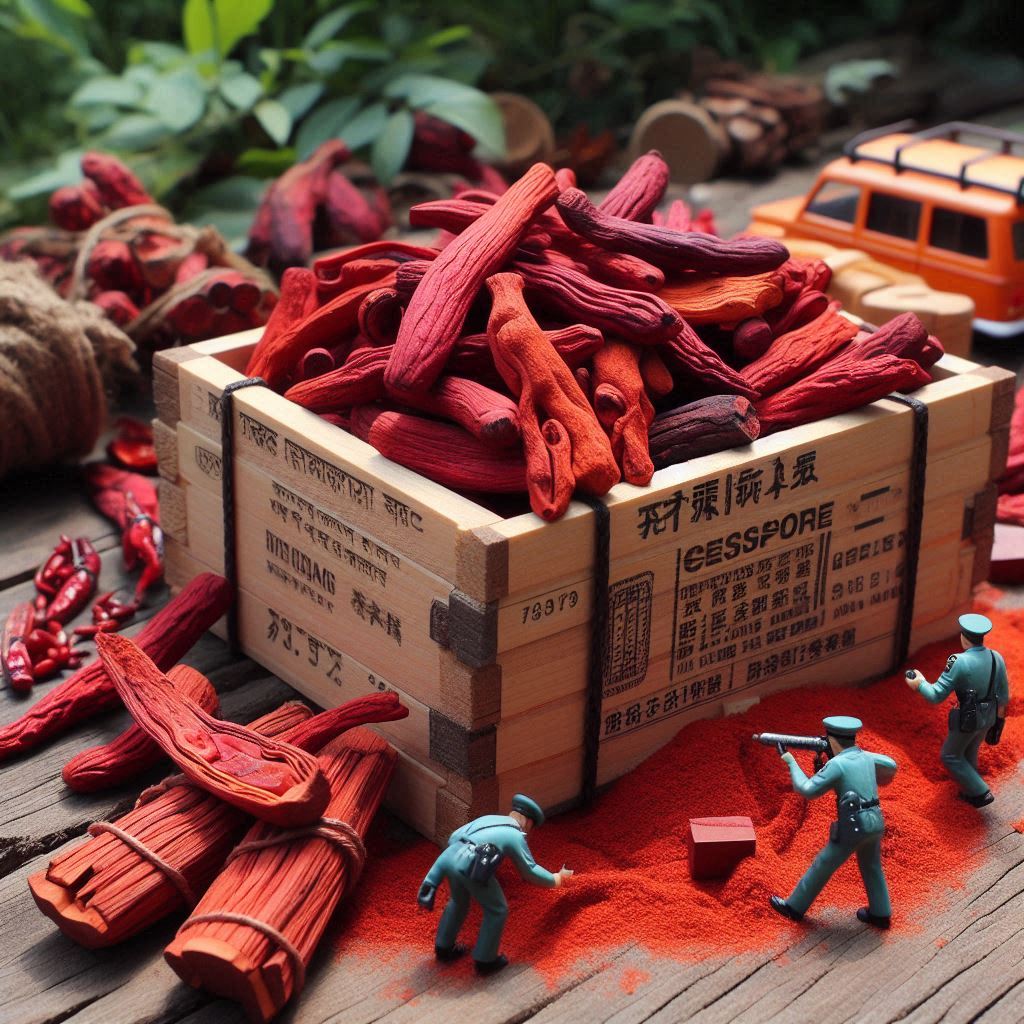Red Sandalwood Smuggler's Trail in Nepal

Introduction
Red Sandalwood, a botanical wonder, has even been the subject of a film: “Pushpa: The Rise,” a story that revolves around a tale of the smuggling of red sandalwood. The film was screened and received recognition at the Moscow International Film Festival in 2022.
Thriving exclusively within the embrace of the Eastern Ghats’ soil of India, the wood of red sandalwood carries both medical and religious importance.
In China, red Sandalwood is known as Zitan and was used to make exquisite furniture adorning the Forbidden City- an emblem of craftsmanship that was used by the Emperor of the Qing Dynasty.
Nepal’s diplomatic balance and relaxed borders, make it easier to smuggle red sandalwood. The route traveled into Nepal from India and then transferred to China.
A subsidiary of Alibaba in Nepal- Daraz also sells 200 g. of Red Sandalwood powder at Rs. 350. However, red sandalwood is a restricted item to export.
Nepal with its porous borders and strategic position has remained a hotspot for a covert network of rare treasures as people are willing to pay exorbitant amounts of money.
Stretching back to 2009, the pursuit of cultivating Red Sandalwood was initiated by KB Gurung on his private land in Patan.
2. Smuggling Nexus:
The red sandalwood smuggling nexus extends to the highest echelons of office in Nepal, as revealed by the media. In July 2007, news exposed the involvement of key figures in the Jhapa District Administration Office. The Purchase Officers and the former sub-inspector of police were implicated in red sandalwood smuggling. The contraband was concealed within sacks of coal and transported using 30 trucks.
Each month, a network of officials allegedly profited from the illicit trade.
Red sandalwood is sold for around Rs 3 million per kilogram if they can successfully smuggle the wood into the bordering town of Khasa, Tibet. As security measures increased at the Tatopani and Rasuwa border passes, the smugglers adapted, turning to the Urai pass.
There are cases in 2016 when 40 quintals were smuggled from Bajura to Tibet with the help of 123 porters and in 2019, when 35 quintals of wood were passed by 100 porters from Dailekh, revealing how the West is also being used for illegal trade but no contraband was confiscated from the region.
The trade of red sandalwood gave rise to smaller criminal factions along the Araniko Highway which highlight the far-reaching consequences of the illicit activity.
Indo-Nepal Relations
On June 18, 1975, Nepal signed CITIES (Convention on International Trade in Endangered Species of Wild Fauna and Flora), in which Red Sandalwood is listed.
The international treaty obliges Nepal to return the smuggled sandalwood to its country of origin, in this case, India.
In January 2020, India was granted permission to retrieve 173,072 kg of red sandalwood from Nepal within 90 days.
Sandalwood can reshape Nepal-China and India relations and can play a significant role in helping build a strong security network. Similarly, the smuggling trails create a risk for gangs and other threats that lead to an increase in crime.
Author
Kripendra Amatya
Editor
Dana Moyal Kolevzon, Director of International Relations, Nepa~laya Productions
Published Date
January 1, 1970



